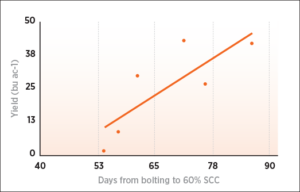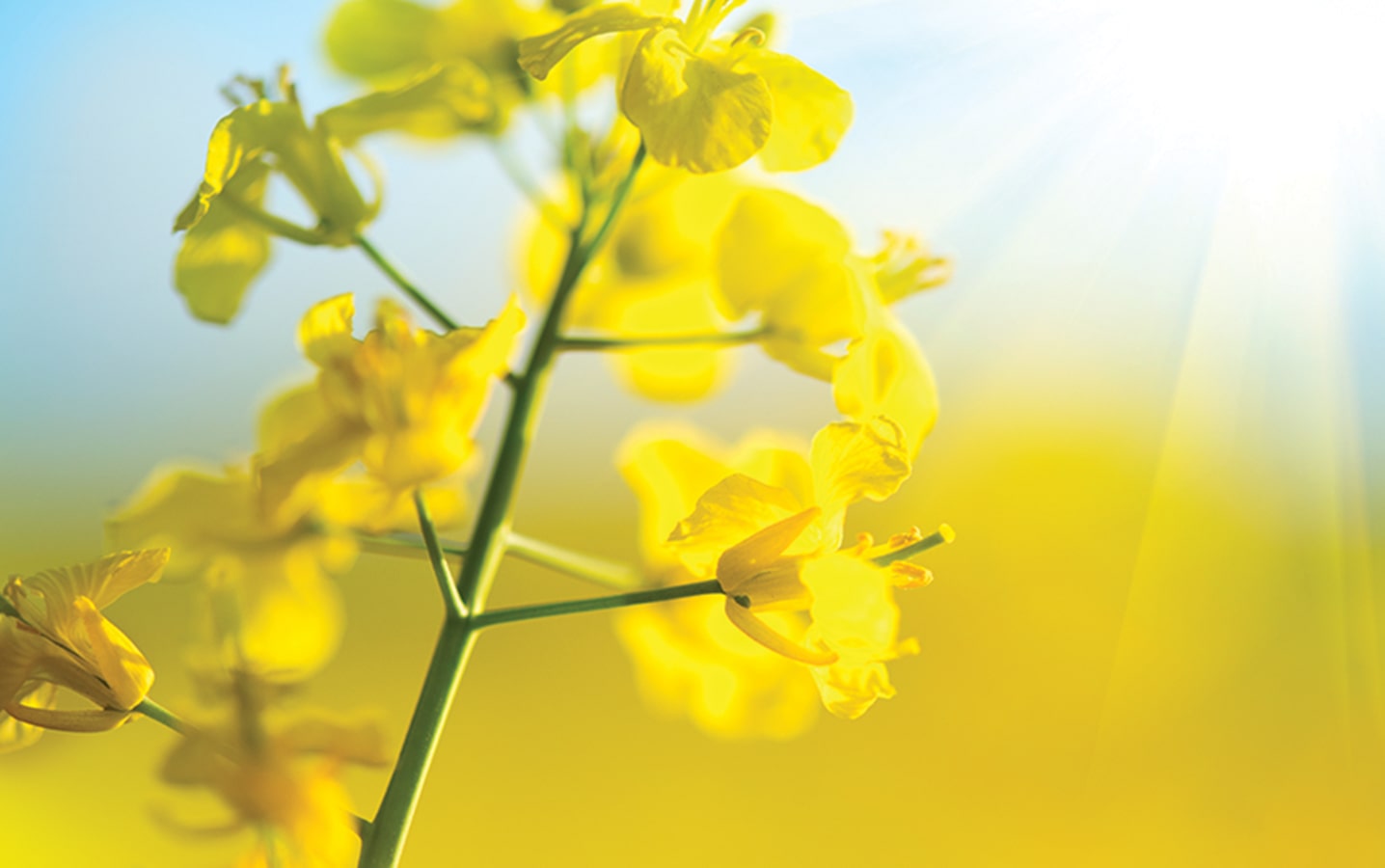How environment influences canola growth stage timing
Phenology is the study of growth stage timing as influenced by the genetics of a plant species or cultivar, the environmental conditions in which the crop is growing in, and the agronomic management of the crop (GxExM). Phenology is complex because countless factors and interactions can influence the timing of growth stages.
A genetic influence of phenology is hybrid maturity: some canola hybrids reach physiological maturity in a shorter amount of time than others when planted on the same day at the same location. Management practices such as planting date and pest control can also affect crop phenology. The most influential factor of phenology is the environment the crop is growing in: air and soil temperature, precipitation or available soil moisture, soil fertility, and photoperiod, and their interactions with each other, to name a few. Additionally, how and to what magnitude the crop responds to the environment depends on its current growth stage. For example, the optimal temperature for plant growth prior to flowering is typically greater than once flowering has started for many crop species, which is certainly the case for canola.
In 2021, Canola Council of Canada agronomy specialists recorded growth stages for the same hybrid in commercial fields in Manitoba, Saskatchewan, and Alberta. Trends between the environmental conditions in critical growth stages were evaluated with phenology, management practices and crop yield. The duration this hybrid spent in critical growth stages among locations was different (Figure 1), which was largely because of the unique environmental conditions of each growing environment. Some fields emerged sooner after planting than others. These fields had the warmest temperatures leading up to their planting date and were planted after May 15. So, in this case, seeding in warmer conditions after the middle of May resulted
in faster emergence.

We also observed that fields with a shorter vegetative period prior to flowering and a longer duration of flowering had greater yield than those with the opposite, a longer vegetative period prior to flowering and a shorter duration of flowering. Once weather records were evaluated with phenology, it was found that when a greater proportion of the flowering days were less than 30°C, the flowering duration was longer. So, a cooler flowering period led to a longer flowering duration, and both resulted in greater yield. Heat stress 101.
Another notable trend was the relationship between the total reproductive development duration (from bolting to 60 percent seed colour change) and yield: more time spent in this critical stage resulted in greater yield (Figure 2). Do some canola hybrids spend more time in reproductive development than others? Are there any management practices that can influence this duration? A hybrid maturity rating is likely related to this duration, but I encourage you to dive in deeper than this. Canola phenology will be unique to your farm!
This article has more questions than answers. This is because there is no single best GxExM combination that will work for all farms in Western Canada due to their unique management practices and environments. Optimizing crop production requires diligent record-keeping and evaluation. To provide more context to yield comparisons, record crop phenology over time and look for trends – like planting date and early season vigour, duration of flowering, and hybrid selection – and how they relate to yield.

Start with recording planting date, then emergence, and so on and so forth. Record as many (or few) stages as you want. This is also a valuable exercise for side-by-side on-farm field scale trials. When phenology is recorded among hybrids or over space or over time, trends between agronomic management and hybrid performance may be revealed. From this, the next steps for optimizing the GxExM on your farm can be determined.





